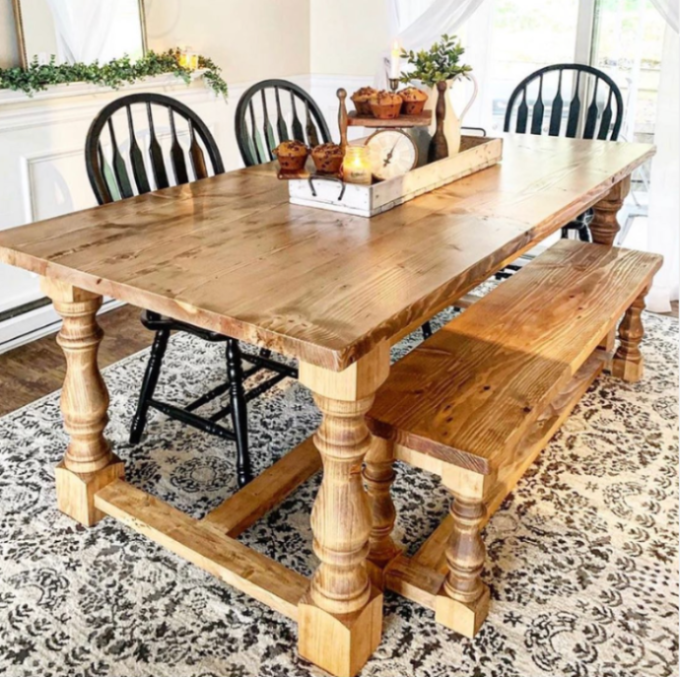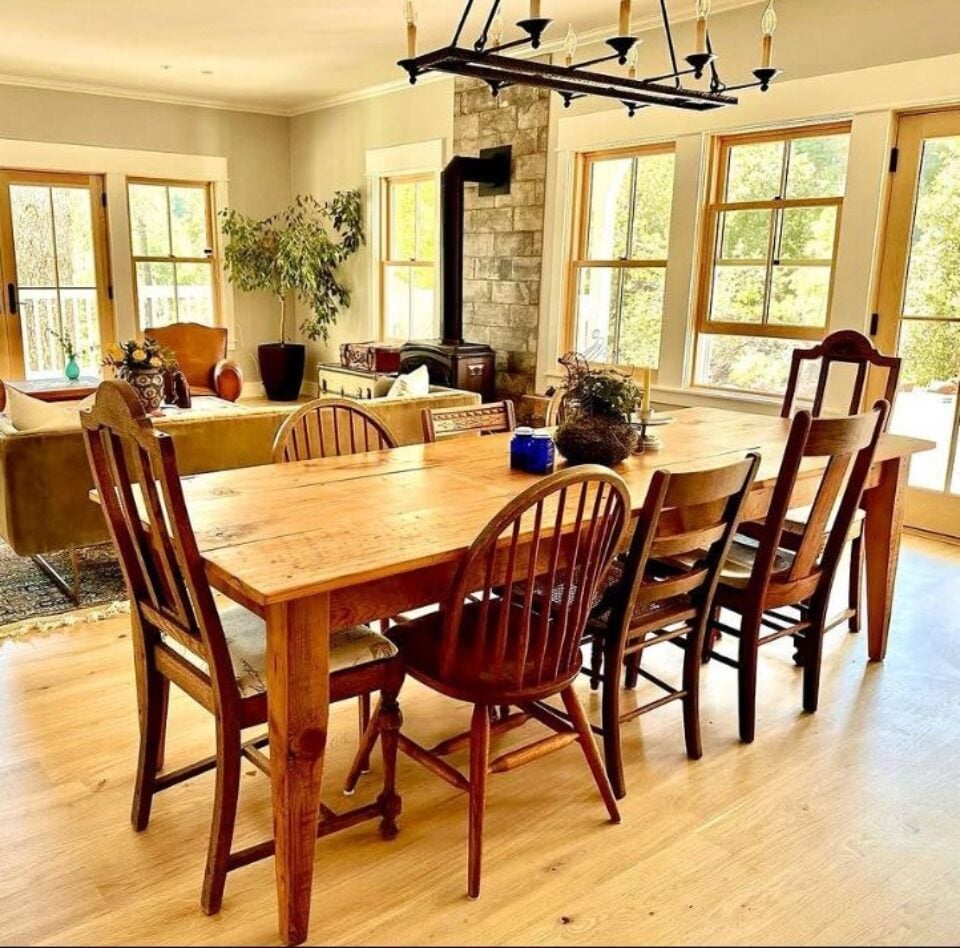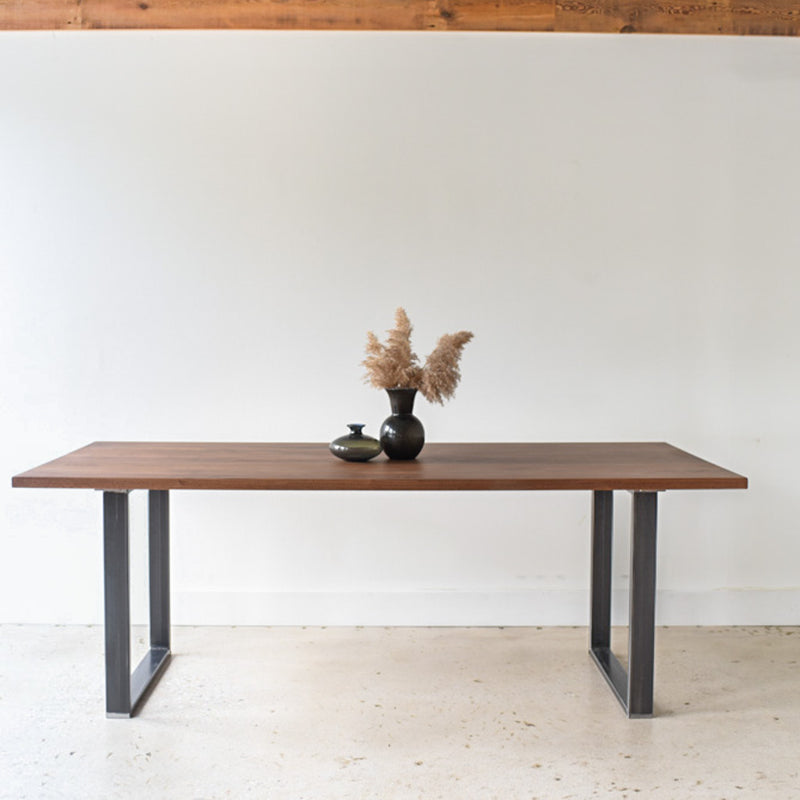Crucial Considerations for Selecting the Right Eating Table Legs Wood
Choosing the ideal timber for dining table legs involves a nuanced understanding of various elements that influence both functionality and aesthetic appeal. The choice of wood type, ranging from durable woods to extra fragile softwoods, plays a crucial duty in ensuring toughness and security. Each of these components can dramatically impact the total experience of your eating space.
Value of Wood Type

Hardwoods, such as oak, walnut, and maple, are typically preferred for their strength and resistance to wear. These sorts of wood provide a robust foundation that can stand up to day-to-day usage, making them suitable for eating tables that experience regular events. On the other hand, softer timbers like pine might be extra at risk to damages and scrapes, which might not be excellent for high-traffic locations.
Additionally, the option of wood can likewise affect the ease of maintenance. Some timbers need regular oiling or sealing to preserve their look, while others may be a lot more flexible. Ultimately, picking the ideal timber type involves stabilizing visual considerations with practical needs, making certain that the eating table legs not only look enticing but also stand the examination of time.
Examining Stability and Toughness
When assessing table legs, one must take into consideration the stability and strength they supply to the overall framework. The legs are vital in supporting the table top and making sure the dining experience is delightful and secure. A secure table is vital for preventing tottering or tipping, which can cause spills or accidents during dishes.
The option of timber type dramatically affects toughness. Woods such as oak, walnut, and maple are commonly much more long lasting and durable than softwoods like want or fir. Additionally, the thickness and layout of the legs play an important duty; thicker legs or those with a tapered design can provide far better assistance and stability.

Visual Considerations
While capability is paramount, the visual appeal of table legs can not be overlooked, as they substantially affect the overall style and setting of the eating space. The option of layout, finish, and wood can improve or take away from the table's visual effect.

Surfaces additionally play a vital function in aesthetic appeals. An all-natural finish can highlight the timber's inherent beauty, while repainted or tarnished legs can present shade and character right into the room. Moreover, the percentage and range of the legs relative to the tabletop and bordering furniture should be taken into consideration to ensure visual equilibrium and communication.
Inevitably, the table legs should not only serve a practical function but additionally add to a natural and welcoming atmosphere, making them an important consideration in the general style of the dining area.
Maintenance Demands
To make sure long life and maintain the charm of wood table legs, normal upkeep is crucial (Dining Table Legs Wood). Timber is an all-natural material that can be prone to harm from dampness, warm, and use. Establishing a routine treatment strategy will substantially boost the longevity of your eating table legs.
Begin with routine dusting using a soft, lint-free towel to eliminate dirt and debris visit site that can scratch the surface area. For even more extensive cleaning, make use of a mild soap service and damp towel, staying clear of excess wetness that could seep right into the wood. It is advisable to use a top notch timber polish or conditioner every few months to nurture the wood and maintain its appeal.
Furthermore, consider the atmosphere where the table is placed. Stay clear of direct sunshine, as you can find out more it can trigger fading, and use rollercoasters or placemats to shield the surface area from warm and moisture. Attend to any damages or scratches without delay with proper wood filler or touch-up pens to protect against additional deterioration. By adhering to these upkeep demands, you will certainly not only protect the aesthetic charm of your wood dining table legs yet also expand their functional life-span.
Budget Plan and Price Factors
Budget and cost elements often play a critical role in the decision-making process for choosing wooden eating table legs. When examining alternatives, it is necessary to establish a clear budget that aligns with your overall furniture investment. The cost of wooden table legs can differ significantly based on the sort of workmanship, wood, and design complexity.
Hardwoods such as oak, cherry, and walnut usually command higher rates as a result of their durability and aesthetic charm. In contrast, softer timbers like yearn may be more economical but could not supply the exact same durability. Additionally, personalized or artisan-crafted legs can sustain additional costs, mirroring the ability and time invested in their creation.
It is additionally crucial to consider the potential long-lasting value of your financial investment. While opting for lower-cost materials might appear financially sensible at first, they may call for more constant replacement or repairs, inevitably enhancing overall expense.
Therefore, stabilizing quality and price is vital. Focus on materials that fulfill your aesthetic choices while ensuring they fit pleasantly within your budget, permitting you to develop a dining location that is both functional and aesthetically appealing.
Verdict
To conclude, picking the suitable timber for eating table legs requires mindful consideration of different variables, including timber type, stability, aesthetics, maintenance, and budget plan. Woods such as oak and walnut provide remarkable resilience and toughness, while layout and thickness add to total security. Aesthetic appeal and maintenance needs have to line up with private choices and way of living. Ultimately, a knowledgeable choice will certainly boost the longevity and visual charm of the table, making certain satisfaction and performance for many years to find.
Choosing the right kind of timber for eating table legs is critical for both visual charm and architectural stability. Ultimately, selecting the appropriate wood type involves balancing visual factors to consider with functional demands, guaranteeing that the dining table legs not just look appealing but additionally stand the examination of time.
It is a good idea to apply a top quality wood gloss or conditioner every few months to linked here nurture the timber and keep its gloss.
The expense of wooden eating table legs can differ considerably based on the type of craftsmanship, layout, and wood intricacy.
In conclusion, selecting the ideal wood for eating table legs requires careful factor to consider of different variables, consisting of timber kind, security, appearances, maintenance, and budget.
Comments on “Tough and Stylish Options for Long Lasting Dining Table Legs Wood Solutions”